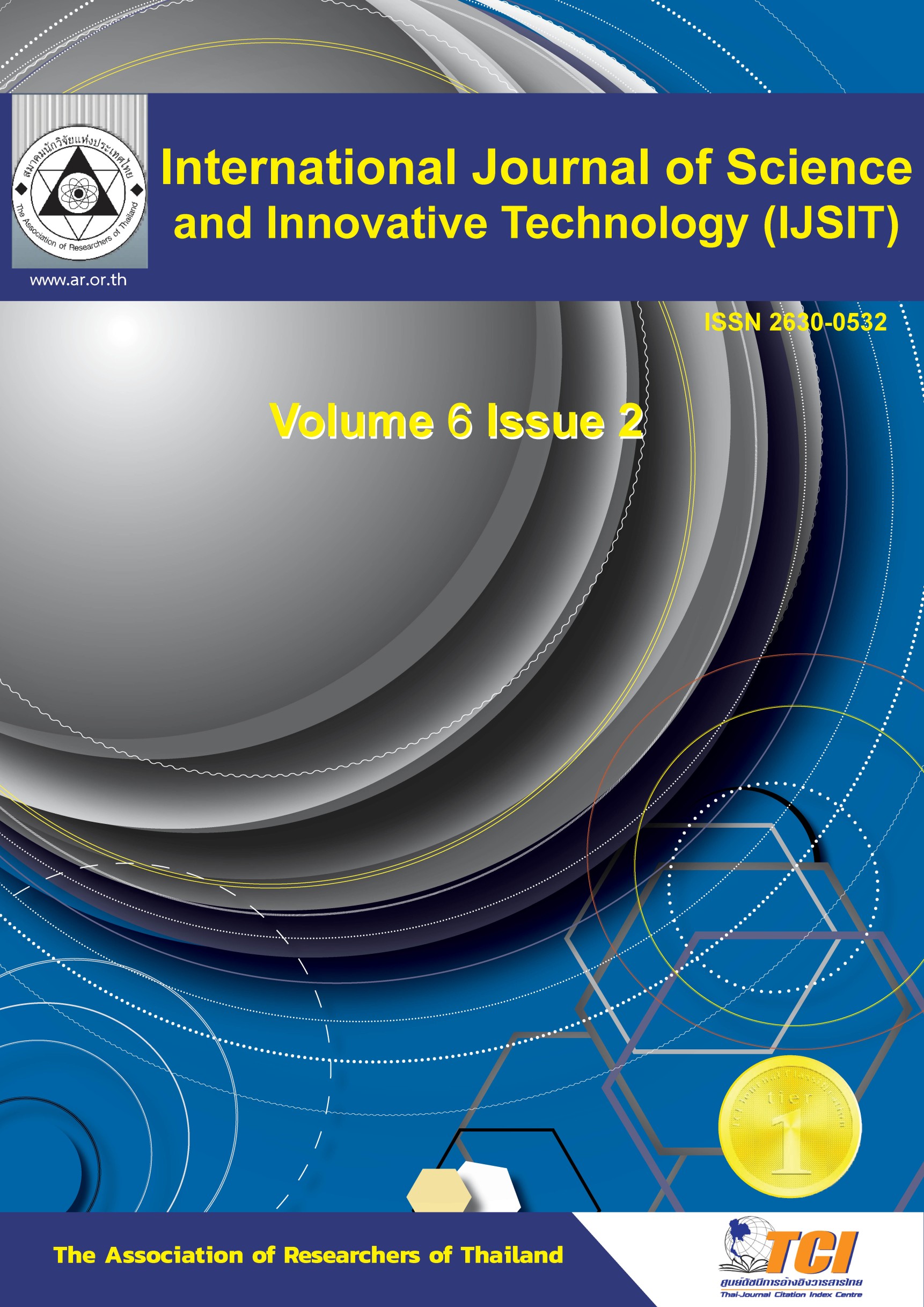Innovative Development of Public Communication System in Police
Main Article Content
Abstract
This study on the "Innovation to develop the role of community police officers in promoting media Literacy for the public" focuses on studying the role of community relations police officers in promoting public media literacy to propose guidelines for promoting media literacy to the public. The study uses a mixed research method to collect data using questionnaires with the community police officers and public relations in the responsible area of the Metropolitan Police Headquarters, totaling 270 people, including in-depth interviews and group discussions with qualified police officers in mass communications and faculty members of educational institutions. Data were analyzed using descriptive statistics and textual analysis. The results reveal that the most found social problems in individuals as arose from the effects of media are gambling, depression, suicide, sexual temptation, product scams, promotion of consumerism behavior, causing of stress and panic, and social media bullying. And the roles of police officers related to promoting media literacy to the public include: 1) dissemination of information, news, and various vital situations to the public with correctness and in a sudden manner 2) the role in preventing the impact of the media on the public; and 3) the role of dealing with the negative impact of the media's presentation of information. Meanwhile, the approaches for promoting media literacy include: 1) Training 2) Creating participation with the community, especially with community leaders, to create initiatives in monitoring community media 3) Creating cooperation between agencies at the local level such as educational institutions or social development agencies to jointly carry out activities in providing fundamental knowledge in media literacy and organizing activities to practice the skills in critical thinking and integrating media literacy with the school curriculum 4) Using community media to disseminate news and information to promote media literacy through handbooks, posters, and knowledge boards including broadcasting through the Public Address System and community radio to encourage people to consume media responsibly.
Article Details

This work is licensed under a Creative Commons Attribution-NonCommercial-NoDerivatives 4.0 International License.
References
Kittikhun Meethongchan and Wongyot Kerdsri. (2021). Factors influencing cybercrime among social media users in Bangkok and its outskirts. Journal of Criminology and Forensic Science, 7(2), 122-135.
Tomorn Apiwantanakorn. (2009). Handbook for organizing processes and activities to develop youth media literacy. (2nd printing). Bangkok: Pinto Publishing.
Malaporn Wichai. Media and its impact on the consumption of children and youth.
www.gotoknow.org/posts/400183 Retrieved on 19 July 2019.
Anderson, A. (2017). Effects of Social Media Use on Climate Change Opinion, Knowledge, and Behavior. Oxford Research Encyclopedia of Climate Science. https://oxfordre.com/climatescience/ view/10.1093/acrefore/9780190228620.001.0001/acrefore-9780190228620-e-369.
Cordner, G. (2010). Community Policing: Elements and Effects. In R. G. Dunham & G. P. Alpert (Eds.), Critical issues in policing: Contemporary readings (pp. 431-448). Waveland Press.
Hobbs, R. (2010). Digital and media literacy: A plan of action. The Aspen Institute.
Livingstone, S. (2004). What is Media Literacy. Cited 2015 May 2. Available from https://www.lmz-bw.de/fileadmin/user_upload/Medienbildung_MCO/filead min/bibliothek/livingstone_medialiteracy/livingstone_medialiteracy.pdf
Martens, H. (2010). Evaluating media literacy education: Concepts, theories and future directions. Journal of Media Literacy Education,2(1), 1-22.
Murphy, K., & Cherney, A. (2012). Understanding cooperation with police in a diverse society. British Journal of Criminology, 52, 181–201.
Phillips, D. P. (1983). The impact of mass media violence on U.S. homicides. American Sociological Review, 48(4): 560-568.
Potter, W. J.. (2014). Media Literacy. 7th ed. London: Sage.
Skogan, W. G., & Hartnett, S. M. (1997). Community Policing, Chicago Style. Oxford University Press.
Trojanowicz, R., Kappeler, V. E., Gaines, L. K., Bucqueroux, B., Sluder R. (1998). Community Policing: A Contemporary Perspective, Second Edition.
Wardle, C. & Derakshan, H. (2017). Information Disorder: Toward an interdisciplinary framework for research and policy making, Council of Europe.
Office of the National Digital Economy and Society Commission. (2021). Summary of the survey results on the status of media and information literacy in Thailand Year 2021. Ministry of Digital Economy and Society. https://datacatalog.onde.go.th/dataset/mil-survey/resource/5d8c4155-82c9-4c21-bd6f-2863cc0b04aa/view/8de8e4c0-560f-48d1-9d59-2e90928bb47a

